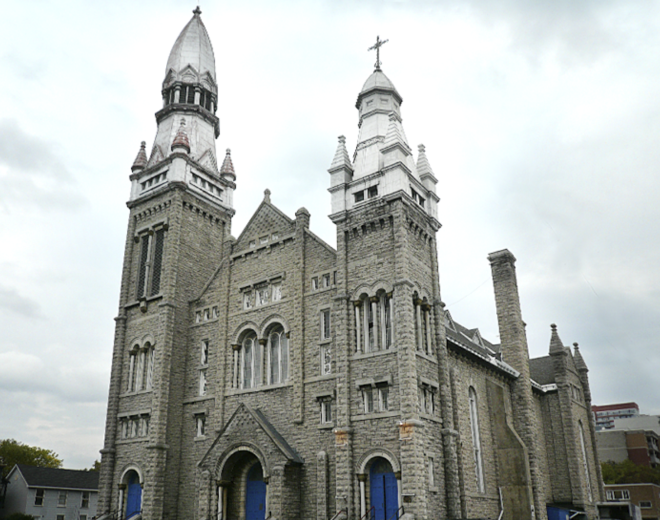Heritage Ottawa Seeks City's Assurance that it will Protect St Brigid's Heritage Status
HERITAGE OTTAWA
While there has been public concern expressed about the intentions of the prospective new owners of the former St. Brigid’s Church, Heritage Ottawa has focused our concern on how the protection of the character-defining elements of the former St. Brigid’s Church, which is designated under part IV of the Ontario Heritage Act, will be enforced by the City.
Heritage Ottawa's letter to the Heritage Planning branch dated August 8 seeks assurances that the organization currently leasing the former church is aware of the building’s heritage status and the protection that affords its special character-defining elements.
BACKGROUND
Prominently located at the southwest corner of St. Patrick and Cumberland streets, St. Brigid’s, with its distinctive asymmetrical domed spires, is a landmark in Lowertown, one of Ottawa’s most historic neighbourhoods.
The first English Catholic church in Lowertown, it built in 1889 to serve the largely Irish Catholic community in the area. It was designed by John K. Bowes and Son who contributed to many important structures in the city, including the Parliament buildings.
The rusticated limestone Gothic Revival building with extensive Romanesque Revival detailing is an outstanding example of religious architecture and a significant reminder of the contribution of the Irish community to the growth of Ottawa.
Throughout its history, St. Brigid’s played an important role as a centre of the cultural and social life of the community. The church was closely associated with the Grey Nuns and the Shepherds of Good Hope. It continued to serve as a cultural centre in Lowertown as St. Brigid’s Centre for the Arts after it was deconsecrated in 2007.
HERITAGE DESIGNATION and EASEMENT
Both the exterior and elements of the church’s interior were designated under Part IV of the Ontario Heritage Act in 1981. In 1992, the Ontario Heritage Trust secured a heritage easement on the property to further protect its heritage significance.
Elements of its extravagant interior that are identified in the designation include its iron columns, canvas panels, figurative murals on the walls, vaulted ceilings and decorative wood carvings, including the wainscoting, pews, confessionals and altar.
Related Reading:
